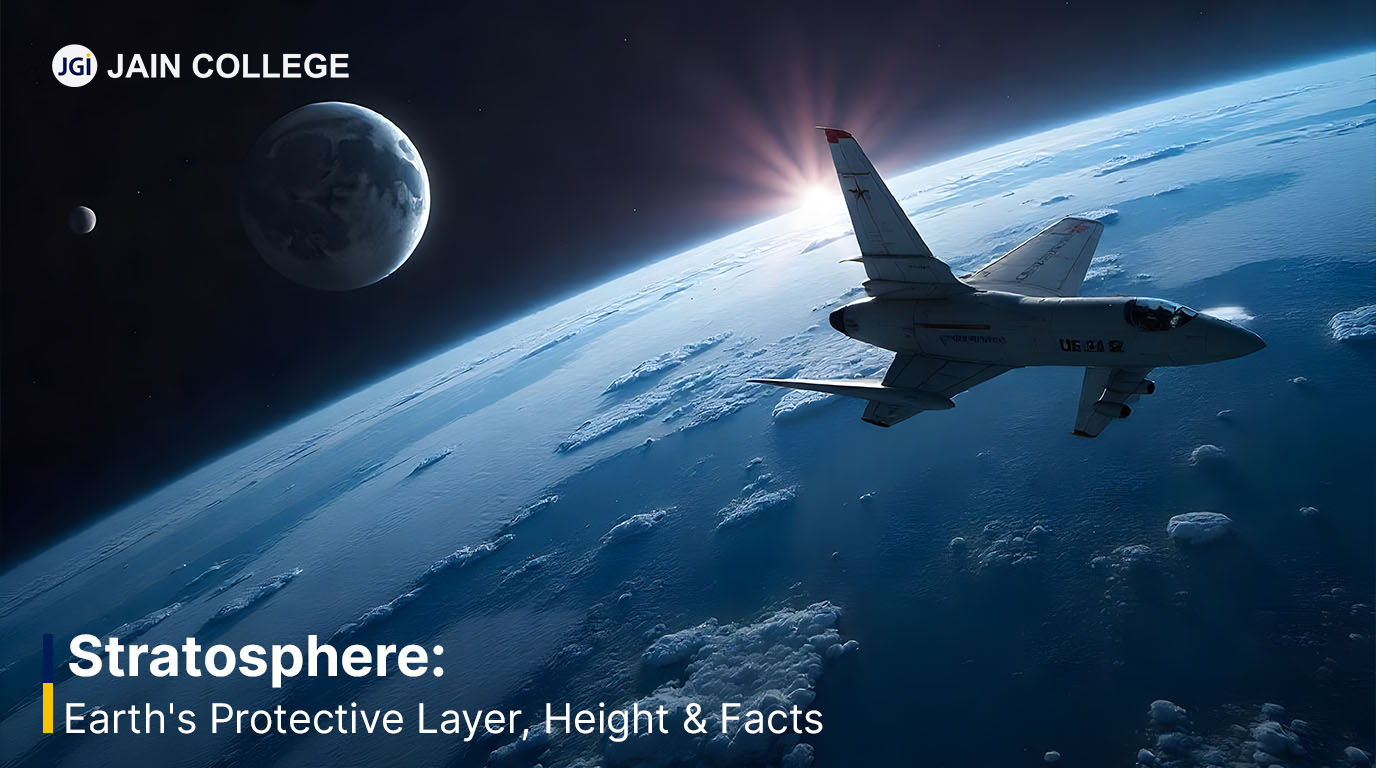
Ever gazed up at the sky and wondered what lies beyond the clouds? Our atmosphere is a fascinating realm of layers, each with its unique characteristics and role.
Let’s dive deep into the stratosphere, a critical layer that shields life on Earth.
The stratosphere is the second layer of Earth's atmosphere, located above the troposphere and below the mesosphere. It extends from approximately 10 km to 50 km (6 to 31 miles) above the surface and plays a vital role in protecting life by absorbing harmful ultraviolet (UV) radiation.
Unlike the troposphere, where weather phenomena occur, the stratosphere is characterized by its stability due to minimal vertical convection. This stability, combined with the presence of the ozone layer, makes the stratosphere indispensable for sustaining life and enabling long-haul air travel.
The ozone layer within the stratosphere is like Earth's sunscreen, absorbing a large chunk of the Sun's harmful UV rays. Without this protection, life as we know it wouldn't be possible.
| Layer | Altitude (km) | Temperature Trend | Key Characteristics |
| Troposphere | 0-12 | Decreasing | Weather phenomena, breathable air, densest layer |
| Stratosphere | 12-50 | Increasing | Contains the ozone layer, stable atmospheric conditions |
| Mesosphere | 50-85 | Decreasing | Coldest layer, burns up meteors |
| Thermosphere | 85-500 | Increasing | Contains the ionosphere, produces auroras |
| Exosphere | 500-10,000 | Varies | Outermost layer, sparse gases, gradual transition to space, Hubble Space Telescope orbits here |
The stratosphere is more than just a layer of the atmosphere—it is a crucial defense system that protects life on Earth. By regulating temperature, facilitating air travel, and shielding us from UV radiation, this stratospheric layer remains an indispensable component of our planet’s delicate balance.
The stratosphere is a stable atmospheric layer located above the Earth's weather systems. The term "strato-" means "layer" or "level," indicating its relatively consistent structure. This layer contains the ozone layer, which plays a crucial role in shielding the Earth from harmful ultraviolet radiation. However, certain human-made chemicals have caused damage to parts of this protective layer.
The stratosphere protects Earth from harmful UV radiation via the ozone layer and provides a stable environment for aviation.
Commercial airplanes fly in the lower stratosphere layer to avoid turbulence and weather disturbances in the troposphere, ensuring a smoother ride.
Yes, some high-altitude birds, like bar-headed geese, can fly at the lower edge of the stratosphere.
It absorbs UV radiation, influencing global temperature regulation and weather patterns. Ozone depletion can lead to climate change.
The temperature in the stratosphere increases with height. At the tropopause, the average temperature is around -60°F (-51°C). As altitude increases, heat generated by ozone formation causes the temperature to rise, reaching a maximum of about 5°F (-15°C) at the top of the stratosphere.
Interested in knowing more such amazing facts? Don’t forget to keep an eye on our blogs!

JAIN PU College, a part of the renowned JGI Group, is committed to empowering students with quality education.
Beyond academics, the college ensures its online content reflects the same standard of excellence. Every blog and article is meticulously vetted and proofread by subject matter experts to ensure accuracy, relevance, and clarity. From insightful educational topics to engaging discussions, JAIN PU College's content is crafted to inform, inspire, and add value to its readers, reflecting the institution's commitment to intellectual growth and innovation.
View all Blogs